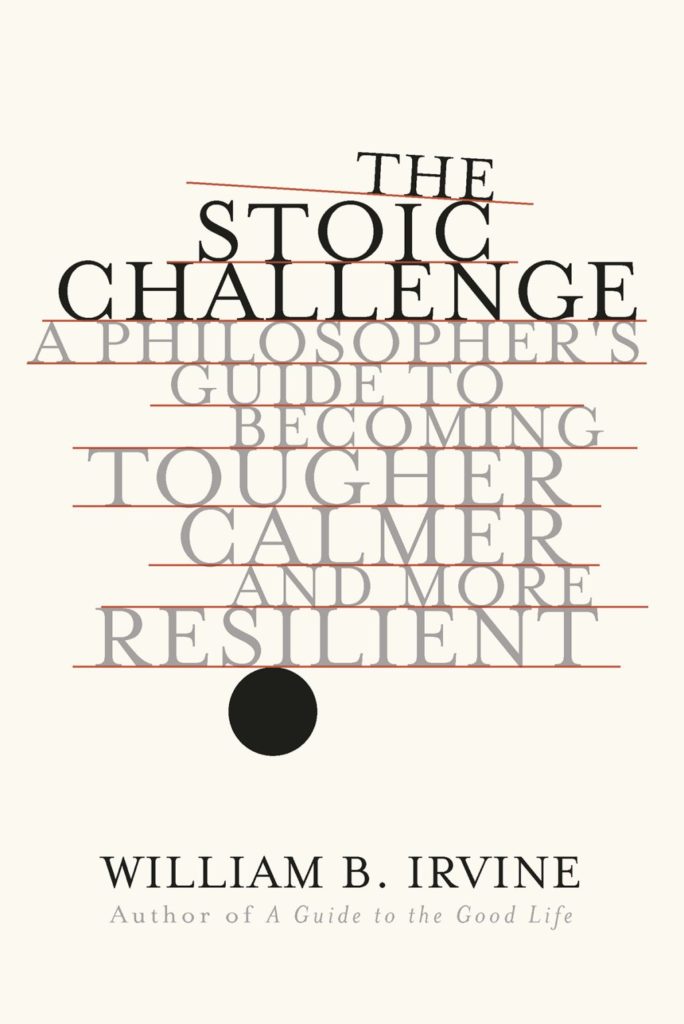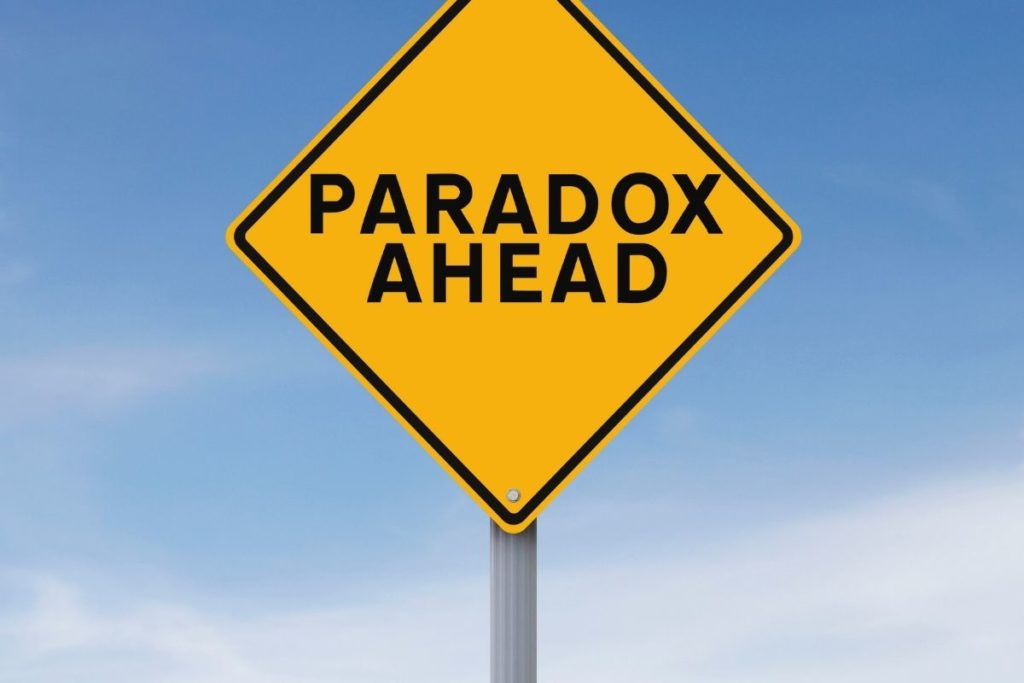
Overview: Broadly speaking, wellbeing and mental health are built through development of mentally healthy habits. Some techniques for building wellbeing seem somewhat paradoxical, including many from Stoic practices. In this post I explore a few and make a book recommendation at the same time. Reading time ~ 10 minutes.
I just finished reading the Stoic Challenge by William Irvine – https://www.amazon.com.au/Stoic-Challenge-Philosopher%60s-Becoming-Resilient/dp/0393652491
It is a quick and easy read for those wanting an inroad into learning about Stoic philosophy but in a practical “how would I use it?” kinda way.

Why would you want to learn about Stoic philosophy? Put simply, the Stoics have lots of practical suggestions about how to live a life with more positive emotion and less negative emotion. A life in which carefully practised psychological techniques are used to buffer against the challenges of life, whilst highlighting and bringing the positives to the fore.
The Stoics offer a philosophy of life – a set of guiding principles for making sense of the life we are given. I’m not suggesting it is ‘the’ philosophy of life, but their ideas have found resonance in recent times, thanks to authors like William translating these old ideas to the modern times.
I’ve personally found lots of value in Stoic ideas and thus continue to read books on the topic. The book in question is not an overview of Stoicism itself, but instead focuses on a select number of techniques that can be used to transform life’s unpleasant surprises into opportunities for growth/ improvement, or simply disable their tendency to elicit such high levels of negative emotion.
What struck me whilst reading these techniques was just how many Stoic practices are paradoxical in nature. By that I mean, that on the surface they would appear to be recipes for negative emotion and reactions, but can actually have the opposite effect, triggering powerful insights with positive outcomes and emotions.

I thought I’d use this post to highlight a few. This reflects a goal I have this year (2022) of sharing more of the potentially beneficial psychological tools I discover with you, the Flinders community. If they sound interesting to you, consider giving them a go or maybe accessing the book to learn more.
Keep a setback journal ✍
I’ve actually started this one myself. It involves keeping track of the setbacks you encounter on a day-to-day basis, the solutions you generated, and how much negative emotion was attached to the setback. These can range from minor annoyances (computer troubles) to mid-level stressors (car broken down) to major life events (loss). Sounds like a list of woes huh?
But it is important how we interpret the process of writing them down. It isn’t to dwell on the problems. It is to trigger us to actively start generating solutions, to recognise setbacks are a normal part of life and opportunities to strengthen our creative problem-solving and to document helpful responses (to use again in the future) and unhelpful responses (to avoid in the future.
Negative visualisation
In a negative visualisation, you briefly imagine what it would be like to lose something or someone that you value. This could be a treasured object, an aspect of your health, your job, house, friend or family member.
Framing is important here. The purpose isn’t to dwell on the loss, but instead reconnect with the gratefulness that you still have that thing, person, object etc. It is a potent way to remind yourself of the things in your life that are sources of happiness and wellbeing, that you may have temporarily overlooked. It may even lead you to interact with that thing or person more intently the next opportunity you get.

Last-time meditation
In a last-time meditation, you think about the activity you are currently doing and consider for a moment that it might be the last time you will do it. For everything we do, there will in fact be a last time.
Even mundane activities, when viewed from the perspective that it might be the last time you get to do that activity, can become imbued with greater meaning and satisfaction. For example, as I write this blog post, and imagine it being the last blog post I write, I feel a sense of gratitude that I even get to do this.
Prospective retrospection
If you find yourself in a frustrating or annoying situation, imagine for a moment a future version of you, that is older or more disabled, who would be glad to trade their circumstances for your current situation. It can help provide a softening perspective on our current predicament.
Even though we might not be happy with the situation we find ourselves in, we can often imagine a person (ourselves in the future or another person entirely) who would be glad to be in our situation as it is better than theirs. Despite the stressors of my current life, I can totally imagine future me (who might be ill or not working) would gladly trade places with current me.
Stoic test strategy
This is the main topic of Irvine’s book.
In the Stoic test strategy, you imagine, when confronted by a setback/challenge/failure that you are being tested by the Stoic gods. It isn’t a punishment but rather a test of your creativity and emotional regulation. Can you find a solution to the challenge and keep yourself emotionally controlled at the same time?
The fact that we encounter frequent small setbacks and challenges on a daily basis means we have many opportunities to hone our problem-solving and emotional regulation skills. This prepares us well for when life sends us more difficult challenges.
A good analogy might be when your topic coordinator sets regular small quizzes in a topic, in the lead up to the final exam. Whilst you might not ‘enjoy’ the quizzes, they help you grow and improve, in order to do better on the final exam. If you frame these quizzes as opportunities to practice, rather than an unpleasant activity, it can change the emotional response you have to them.
Stoic adventure
In a Stoic adventure, you purposefully put yourself into new situations or learn new skills so that the likelihood of setbacks and failures (where you can practice your problem-solving and emotional regulation skills) is increased.
It is like inviting the Stoic gods to send you more setbacks and difficulties (more Stoic tests), so you can further advance your capacity to manage them.
Notice with Stoic adventures (as with Stoic tests) that you are, in a way, inviting these challenges into your life, knowing that the process of solving them will help you build resilience. This may seem like a subtle shift in perspective, but it has the capacity to turn unwanted events into psychological training opportunities.
Toughness training
Toughness training is like a step up from a Stoic adventure in terms of challenge. In toughness training, you purposefully put yourself into emotionally and/or physically uncomfortable situations.
Many of us do a version of this with our exercise programs. We make our workouts uncomfortable and unpleasant, knowing that we’ll grow in strength as a result. As an interesting aside, I’ve noticed a spike in people doing cold water/ice exposure as a wellbeing strategy. This would constitute a form of toughness training.

But we can do this emotionally as well. Find situations that elicit strong negative emotions and put ourselves purposefully into those situations to build our capacity to withstand them and increased confidence in our pain tolerance. For me that would be flying as flying elicits a lot of anxiety in me.
Deliberate self-exposure to discomfort can build endurance and resilience. That additional endurance and resilience can then be carried into the rest of our lives.
What is happening with these different strategies?
Stoic philosophy, as with other philosophical and religious traditions, holds as a central truth that suffering, setbacks, losses and failures are part of the human condition.
The Stoics say the key to navigating difficult times is not to expend energy trying to avoid them, but to actively embrace them in both imagined (e.g. negative visualisation) and real-world (e.g. Stoic adventure) ways. Doing so helps build the psychological tools necessary for good problem-solving and emotional equanimity.
Paradoxically, a life in which we do this is a happier one, because we learn to approach such setbacks with greater equanimity and problem-solving, leading to fewer negative emotions such as anger, frustration, extended grief and sadness.
If this sounds intriguing to you, I encourage you to consume some of William’s materials on Stoic philosophy. He explains it in a way that is very accessible and actionable. These techniques may or may not work for you, but they are simple to implement with William’s guidance and thus worthy of experimentation.

